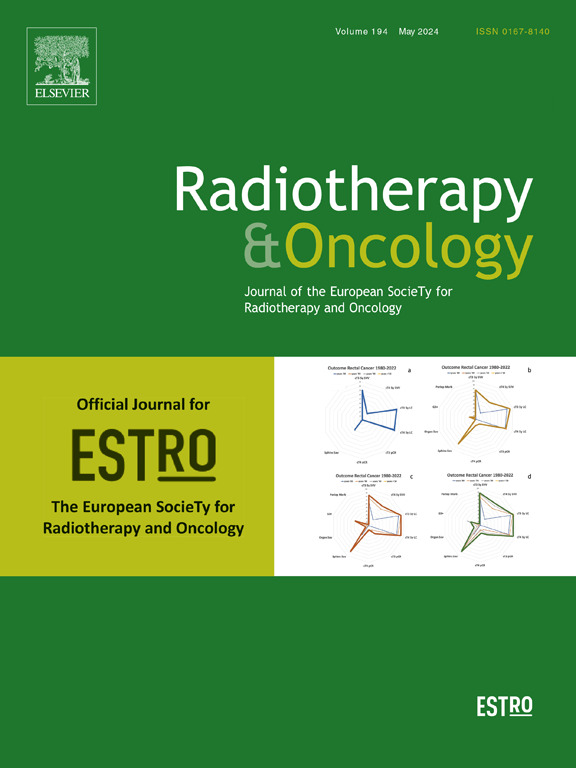Re-irradiation for children with diffuse intrinsic pontine glioma and diffuse midline glioma
IF 4.9
1区 医学
Q1 ONCOLOGY
引用次数: 0
Abstract
Background and purpose
Diffuse intrinsic pontine glioma (DIPG) and diffuse midline glioma (DMG) are incurable brain malignancies. In this study, we report one of the largest known single-institution cohorts of DIPG/DMG patients undergoing re-irradiation (RT2) to evaluate its effect on survival.
Materials and methods
Children aged less than 18 years treated for DIPG/DMG with initial fractionated photon radiotherapy (RT1) and had subsequent recurrence were retrospectively reviewed. Patients treated with or without RT2 were compared. The primary outcomes were overall survival (OS) from time of recurrence after RT1, and from start of RT2 (for the RT2 group).
Results
A total of 118 children were included, 39 of whom received RT2. Children treated with RT2 had superior OS, with 6-month OS of 66 % vs 22 % in those who did not undergo RT2 (p < 0.0001). Median survivals were 6.9 months for the RT2 group vs 2.7 months for RT1 only. Median time from RT1 to RT2 was 7.7 months; patients with a greater than 1-year latent time between RT1 and RT2 had longer OS from start of RT2 (median 10.9 months vs 5.5 months, p = 0.023). 61 % of those treated with RT2 experienced improvement of neurologic symptoms post-RT2. Multivariate analysis identified younger age, adverse imaging findings on the 4-week post-RT1 reassessment MRI (including pseudoprogression), and the absence of RT2 as poor prognostic factors for OS.
Conclusion
Re-irradiation was associated with improved survival and neurological recovery in children with recurrent DIPG and DMG. There is a need to identify novel biomarkers to better select patients who respond best to RT2.
求助全文
约1分钟内获得全文
求助全文
来源期刊

Radiotherapy and Oncology
医学-核医学
CiteScore
10.30
自引率
10.50%
发文量
2445
审稿时长
45 days
期刊介绍:
Radiotherapy and Oncology publishes papers describing original research as well as review articles. It covers areas of interest relating to radiation oncology. This includes: clinical radiotherapy, combined modality treatment, translational studies, epidemiological outcomes, imaging, dosimetry, and radiation therapy planning, experimental work in radiobiology, chemobiology, hyperthermia and tumour biology, as well as data science in radiation oncology and physics aspects relevant to oncology.Papers on more general aspects of interest to the radiation oncologist including chemotherapy, surgery and immunology are also published.
 求助内容:
求助内容: 应助结果提醒方式:
应助结果提醒方式:


